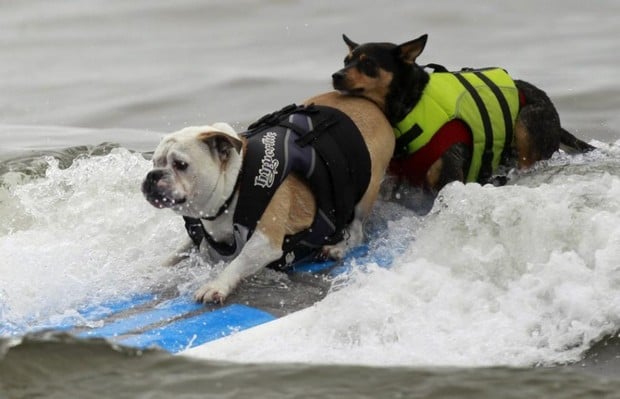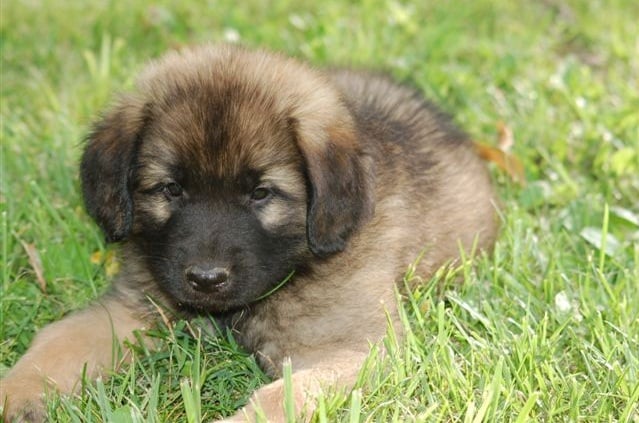How to Keep Your Dog Safe from Blue-Green Algae

When you have a dog, you must take every precaution to keep them say. At home, this means things like locking up any toxic substances in cupboards out of your dog’s reach and making your property secure so they cannot escape. If you take your dog out and about on walks, there are other safety concerns for you to consider.
For example, keeping your dog on a leash. Something that many dog owners do not realize is that there is also a potential risk from water outdoors. Many people will allow their dog to drink from puddles of water while they are out on their walks, without realizing the potential risks of allowing their dog to do so. Similarly, they may allow them to play or swim in deeper water. Many organizations are now warning of the dangers of allowing dogs from drinking water outdoors due to the prevalence of toxic blue-green algae, and they are handing out advice accordingly.
What is Blue-Green Algae?
According to Dogster, blue-green algae have been identified in 50 states. Also known as cyanobacteria, this is a form of algae that is found in stagnant freshwater lakes and ponds during warm weather. It looks like paint or slime on the surface of the water. However, it will only look like this after it has formed into a clump and bloomed.
A lack of slime on the surface does not mean that blue-green algae are not present. It can look like brown dots, green bundles, or green flakes. The algae are at their most toxic in warm conditions, as it thrives in temperatures over 75-degrees Fahrenheit. Therefore, vigilance is most important when the weather is warm, although you should take care throughout the year.
There has been a spike in the presence of blue-green algae across the United States, regardless of climate conditions. It is important to note that it is not only dogs that can die from blue-green algae toxicity. It can also affect birds, reptiles, livestock, fish, other wildlife, and cats. The algae are also toxic to humans, so you should not ingest it yourself, or go for a swim in contaminated waters.
How Does Blue-Green Algae Affect Dogs?
The Blue Cross explains that although not all blue-green algae are dangerous to dogs, some types of blue-green algae can produce harmful toxins. These toxins can stop a dog’s liver from functioning and can also cause neurological damage. Dogs that survive drinking or swimming in algae-contaminated water can often suffer from long-term health problems.
Sadly, many dogs die as a result of drinking blue-green algae. In severe cases of toxicity, it can take as little as 15 minutes after contamination for a dog to die. Most cases that lead to death have been caused by the dog drinking from a stagnant water source. However, a dog that has swum in contaminated water can retain blue-green algae in its fur. It can then ingest the algae from its fur as it licks its coat as part of the self-grooming process.
The ASPCA says that it is important you can recognize the symptoms of blue-green algae intoxication. You possibly may not realize that your dog has come into contact with this toxic substance, especially if you have let them off their leash when you were out on a walk. Some of the symptoms of blue-green algae intoxication include:
- Excessive drooling
- Seizures
- Disorientation
- Diarrhea
- Panting
- Respiratory distress or failure
- Vomiting
- Liver failure
- Ultimately death
Advice for Avoiding Blue-Green Algae
There are some steps that you can take to make sure that you keep your dog safe. The Michelson Found Animals Foundation has recommended taking the following precautions.
- Before allowing your dog to swim, always inspect the water first for signs of blue-green algae on the surface.
- Never allow your dog to drink stagnant water.
- If your dog runs off and swims in stagnant water, you should rinse them off immediately, regardless of whether you have noticed signs of blue-green algae or not.
- Look out for signs. Many public health organizations regularly test water where there are known contaminations. They will put up signs warning the public of the contamination and the potential dangers associated with blue-green algae.
What Should You Do If Your Dog Drinks Blue-Green Algae?
If you suspect that your dog has come into contact with blue-green algae, then this is an urgent situation. This applies to both drinking stagnant water and going for a swim in water with blue-green algae. You must take your dog to the veterinarian immediately to seek their advice. A failure to seek professional advice can potentially lead to the death of your pet. Even if you have not seen your dog ingest or swim in contaminated water, you should still seek the advice of your vet if your dog begins to display any of the symptoms of blue-green algae toxicity.
Blue-Green Algae and Dogs – The Bottom Line
Blue-green algae is a toxic substance that forms in stagnant water in warm conditions. Your dog can suffer from algae toxicity if it drinks the water or goes for a swim in an area that is contaminated. Algae toxicity can lead to many serious symptoms, including neurological deficits and liver damage. Ultimately, it can lead to the death of dogs and any other animal that has ingested the algae. The best ways to avoid your dog suffering from algae toxicity is to stop them from drinking stagnant water, do not let them swim in contaminated areas, rinse them off if they do go in the water, and look out for warning signs.
If you suspect that your dog has ingested blue-green algae or come into contact with this substance when going for a swim, you must take them to the vet immediately. You should do this even if you have not seen them ingest the algae but they are displaying symptoms of toxicity.
You can also read:
- Is It Safe For Your Dog To Drink Tap Water?
- Is It Possible Your Dog Needs Braces?
- How to Tell if your Dog likes Their Food
- 10 Dog Toys You Can Make Yourself for Little to No Money
- A Gallery of Dogs Who are Baseball Fans






